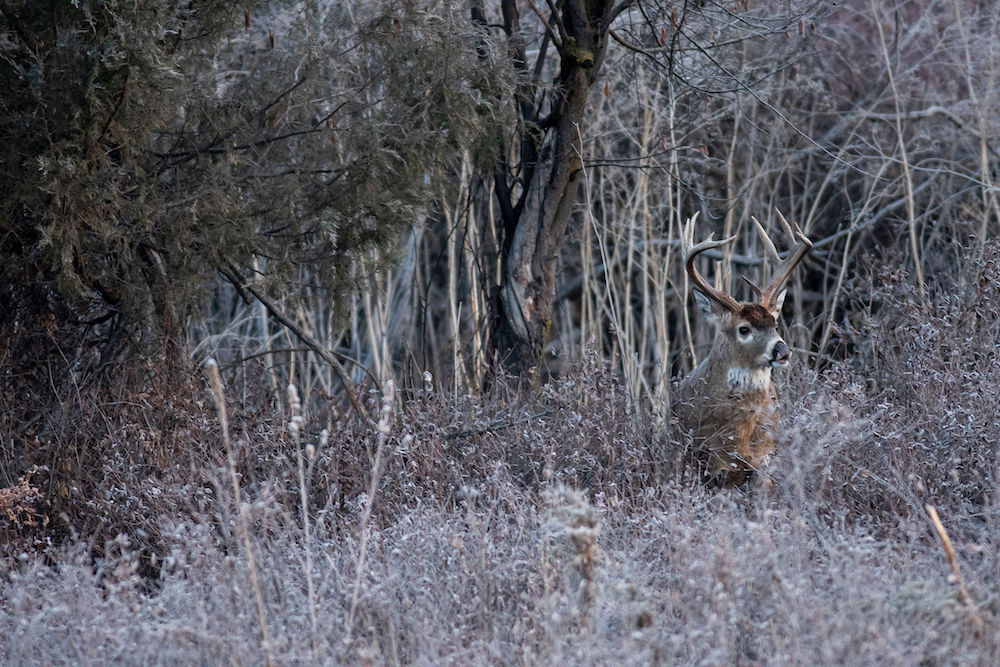If you’ve hunted for any length of time, you’ve probably seen and heard contradictory opinions and research regarding the best time to hunt. There are varying opinions on which moon phase is best, what the optimal air temperature should be, and if your chances of success are better in the early season, rut, late season, or somewhere in between.
Research proves that human pressure, weather patterns, moon phases, time of year and the breeding seasonall affect deer movement. So, logically, if you combined all the research, you should be able to pinpoint the prime time for deer movement, right? Not necessarily.
According to Stephen Ditchkoff, researcher and professor of wildlife ecology and management at Auburn University, there’s still a myriad of things affecting deer movement that we don’t even understand, making it difficult to make such predictions.

Peak times might vary during different seasons. Photo Credit: John Hafner
“There’s a lot of variability between animals and between the pressures placed on those animals by the environment,” Ditchkoff said. “There’s also variability in the environment from day to day and week to week. There are so many factors at play that it’s hard to pin anything down.”
Ditchkoff has conducted research for 31 years and has studied deer movement related to moon phases, hunting pressure and time of year. He works with the captive deer herd at the deer research facility in Camp Hill, Alabama. Even with all his experience and knowledge, he still can’t determine why deer are out in a field one night and gone the next, even though the conditions are nearly identical. But he does know that the best time to hunt will vary from person to person and area to area depending on the local conditions.
Because people and researchers base their opinions and data on different locations, habitats and individual deer, they will have different outcomes and experiences. For example, the person raving about midday movement might hunt public land where other hunters leave at 10, return at 2, and bump deer along the way. But someone hunting alone on an isolated pocket of private land will likely have a different experience.

The best time to hunt is going to vary depending on the hunter. Photo Credit: John Hafner
Because many factors influence deer movement that are out of our control or understanding, Ditchkoff encourages hunters to control the things they can control to position themselves for success.
“The most important two things that I factor in when I choose to hunt and where I choose to hunt (to ensure I see deer) are human pressure and weather,” he said. “Don’t over-hunt stands and don’t hunt stands when the wind and conditions are wrong.”
Most hunters don’t have unlimited time or places to hunt, so when they do get a chance to hunt, they usually hunt their best spot regardless of the situation. Ditchkoff understands that people want to spend as much time afield as possible, but he believes hunters can increase their success by reducing pressure and making smart hunting decisions.
“Deer are good at what they do, and what they do is stay alive,” he said. “To me, the one thing that evens the playing field with deer is where I hunt. I can choose where I hunt so that it’s a surprise to the deer. Because I know human pressure and weather affect deer movement, I won’t negatively impact future hunts by sitting somewhere when the wind is wrong.”
If you want to determine the best time to hunt, conduct your own research for your unique situation and hunting location. Keep a hunting journal and record as many details as possible. Over time, you’ll be able to identify unique trends and movement patterns specific to the area you hunt. Then, you can add yet another opinion to the chaotic “best time to hunt” conversation.
If that doesn’t sound appealing to you, Ditchkoff said the best time to hunt whitetails, or any other species for that matter, is when you can.